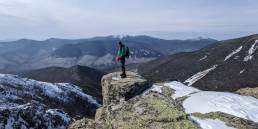It takes a truly tough adventurer to go camping in the Northeast during winter. But, for anyone who wants to get out—but not spend a night lying in the snow—or for someone who just wants to switch things up for an easy weekend, there’s nothing more quintessential than sitting by a fire in a cozy cabin in the woods. And, in the White Mountain National Forest, that’s easier to do than you might think.
The Appalachian Mountain Club operates a series of huts throughout the Whites during the summer, and in the winter season, three of these backcountry outposts remain open for everyday hikers, thru-hikers, and anyone else trying to stay a little more comfortable during their overnights.
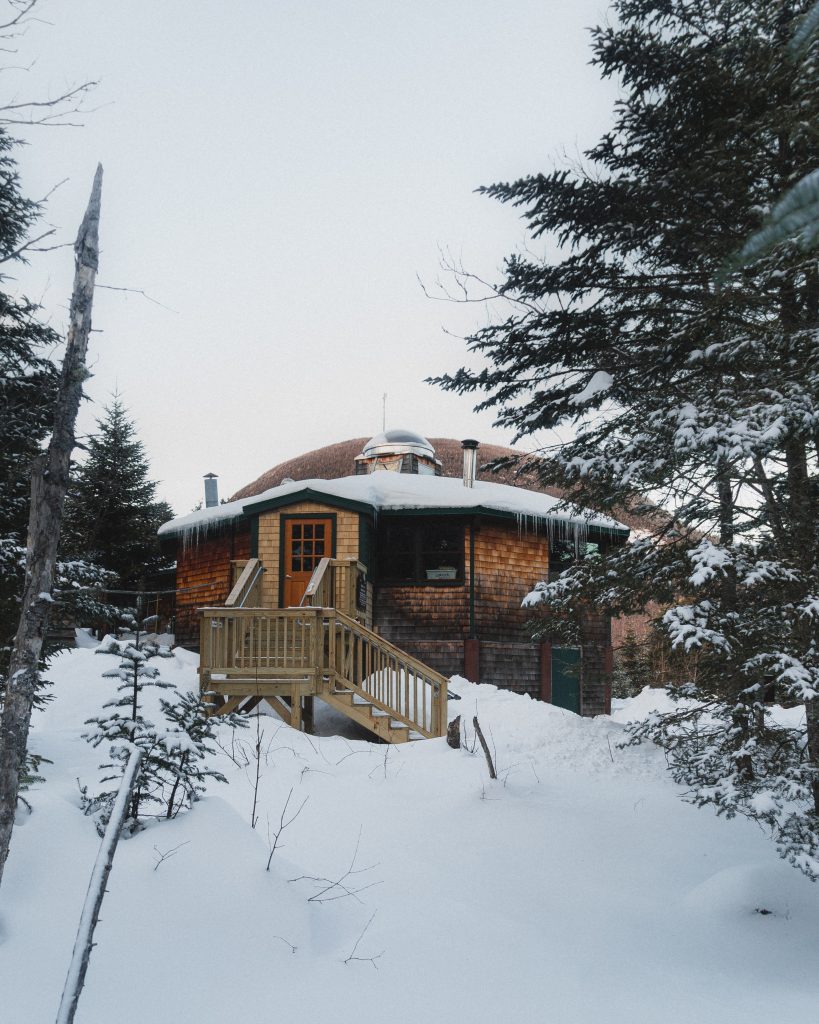
Lonesome Lake Hut
Getting to these huts requires a bit of a hike, with some longer than others, and none are a small task in the winter. The easiest to access is the Lonesome Lake Hut, located 1.6 miles from the Lafayette Place Campground in Franconia Notch on I-93. It is a relatively easy hike for experienced hikers, but it’s important everyone remembers snowshoes and crampons to effectively conquer the ice and snow that may be on the trail.
The Lonesome Lake Hut sits behind Lonesome Lake, offering a perfect view of Franconia Ridge: some of the most beautiful views New Hampshire winters have to offer. Caretakers light a fire in the hut after 4 p.m., and with plenty of games and books about the history of the mountains, it may be one of the most relaxing evenings you’ll find out there.
The Lonesome Lake Hut features bathrooms, running water, and a full kitchen with gas stoves to prepare food. Almost completely made from wood, the architecture, and atmosphere will beat every hotel you could find. Even on the coldest winter days, they give you a warm, cozy, at-home feeling.
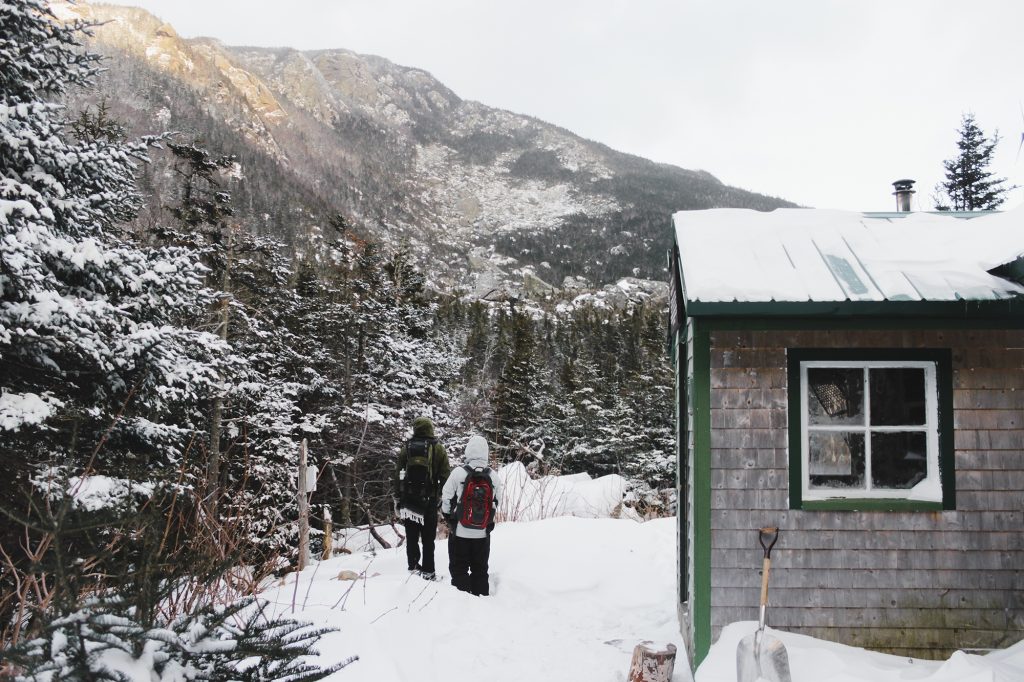
Carter Notch Hut
Carter Notch Hut, requiring a one-way 3.8-mile hike, is the next-most accessible, taking hikers up a beautiful trail through the Whites’ deep wilderness. Hikers pass the Carter Lakes, where you’ll find the massive peaks of Carter Dome and Wildcat Mountain in the background. This hut, like the others, will have some snacks available, and it also provides a pillow, so you still need to pack a sleeping bag and blankets in order to stay warm through the night. Additionally, two detached bunkhouses offer more of a cabin experience.
For adventuring nearby, the trails close to the hut are a must for exploring and relaxing. Most hikers will continue—either the next day or after dropping off most of their heavy equipment in the hut—up Carter Dome. The huts are about 1.2 miles from the summit, where, on a clear day, the spectacular views are more than worth the trek.
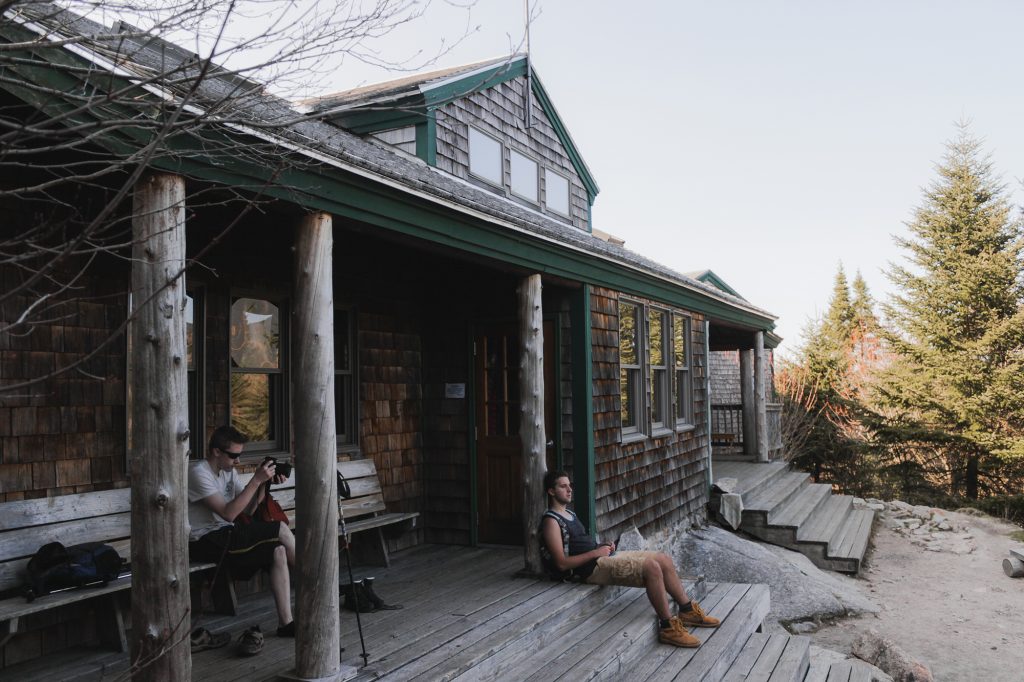
Zealand Falls Hut
Zealand Falls Hut may not be the hardest to access, but it requires the longest journey. It is only about 2.8 miles from the trailhead, but during the winter, the Zealand Road is closed, which adds an additional 3.5 miles. While it’s certainly doable on foot or by snowshoe, cross-country skiing can speed it up.
Either way, the trail is a stunning trek worth every second. For a hike in the Whites, the journey is relatively flat, so you can enjoy the frozen ponds and scenic backgrounds without having to think about every step, like most other routes you’ll take in winter.
After getting to the hut, one of the best ways to enjoy the evening is by continuing up about 1.3 miles to Zealand Cliff, where the lookout is often regarded as one of the top views in the entire White Mountain National Forest.
If you’re looking for something to do back inside, the hut’s sign-in books are a great source of entertainment. Caretakers store all of them on a shelf, each full of names, drawings, and stories from the hut’s visitors throughout the years.

Hut Etiquette
Even though these are relatively civilized spaces, visitors are still asked to adhere to standard Leave No Trace principles: Specifically, never leave trash behind in the hut and bunk houses, just like you wouldn’t want to leave waste at your campsite if you were tenting. Most people will bring a small plastic bag to store unwanted items until they get off the mountain.
It’s also important to be respectful of other hikers staying at the cabins. Many people come out here to get away from civilization, so try to keep noise levels down after sunset.
Prices
The comfort of staying out of the wind and cold costs $74 per night during the winter season ($60 if you are an AMC member), and in the process, you’re helping support the AMC’s work. The caretakers and hut “croo” members are some of the friendliest people on Earth, so get out the calendar and plan your next trip!
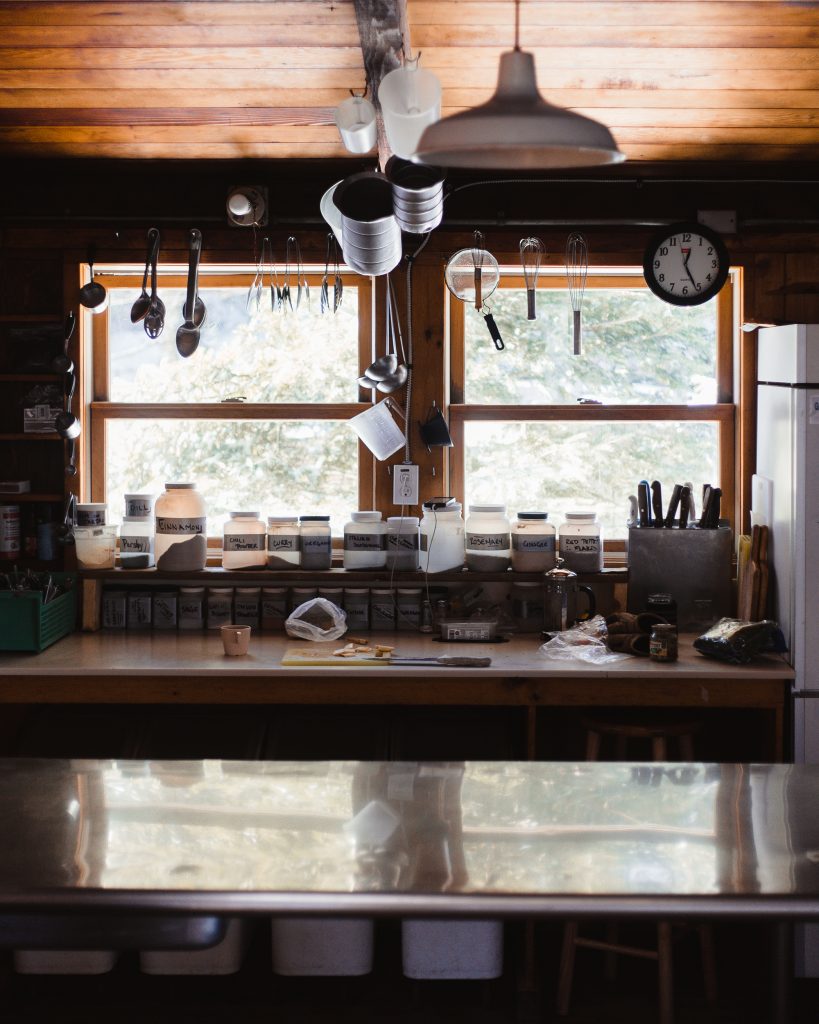
Jack Roberts
Jack is a student at Plymouth State University for Professional Communication with a minor in Photography. He has been living in NH his entire life and recently found a passion in being outdoors. He enjoys cliff diving, hiking in crazy weather and sleeping in the middle of the woods miles away from anyone. You can check out his latest adventures at @jproberts on Instagram.
Related Posts
April 12, 2024
Explore Like a Local: The Outdoor Mecca of North Conway, NH
There's a lot to love about this New…
April 3, 2024
5 Things To Do in the Boston Area During Mud Season
Adventure opportunities are abundant…




